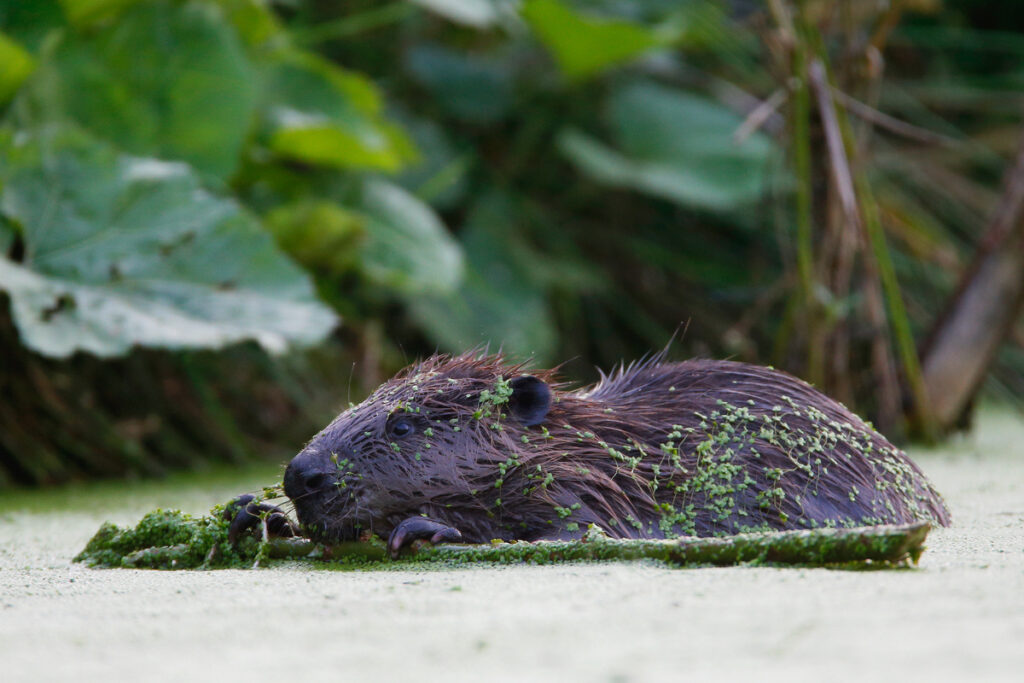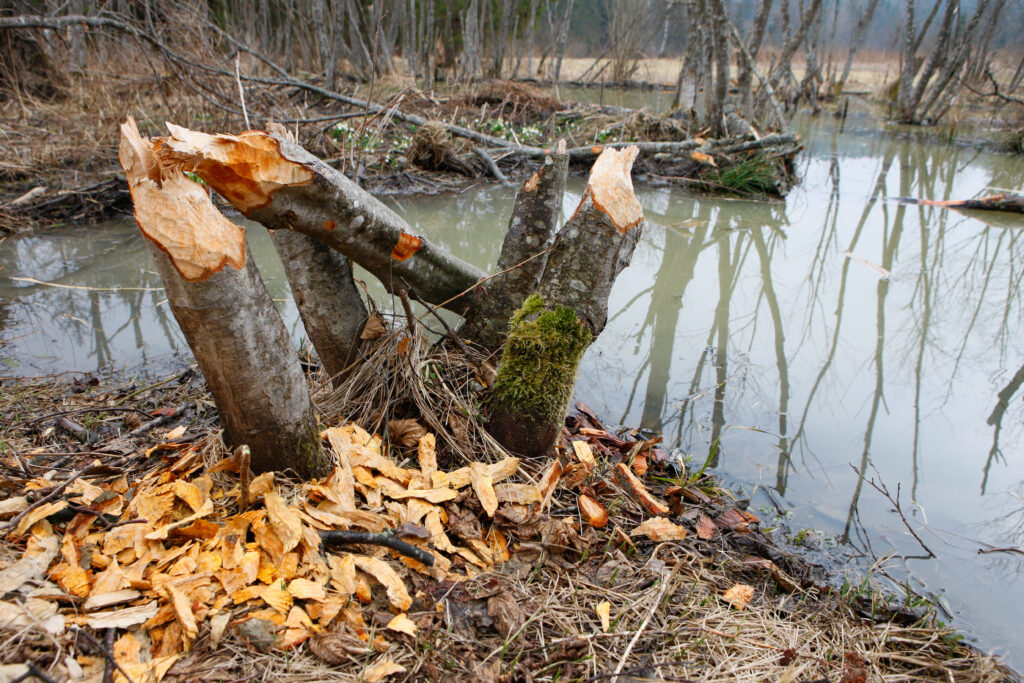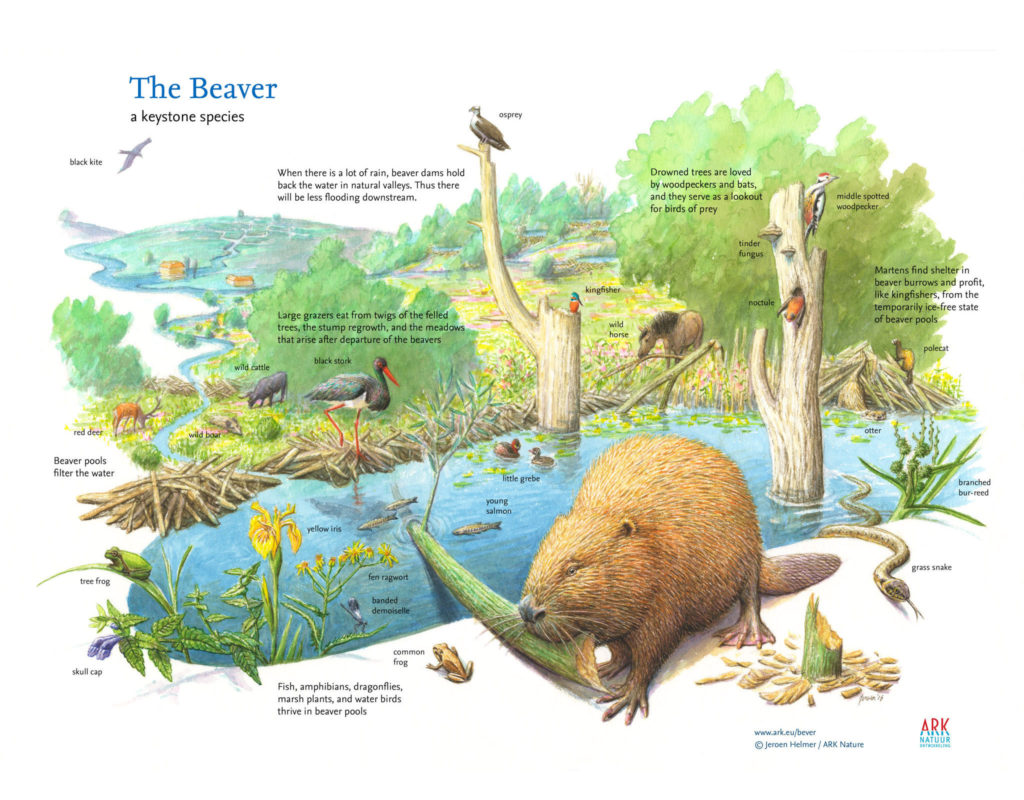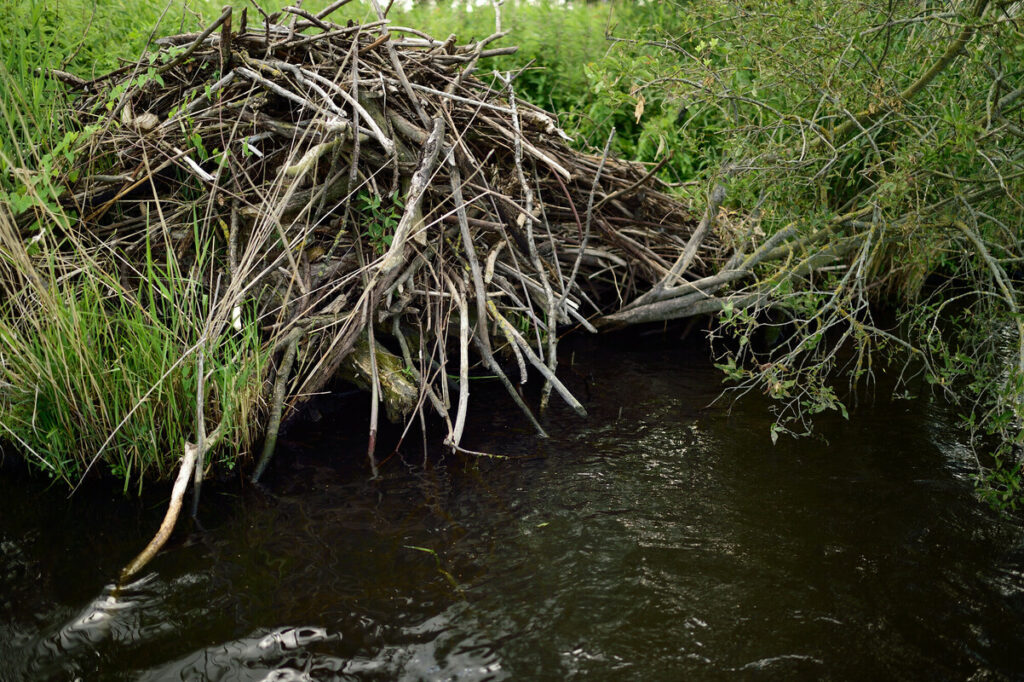Not only iconic large animal species are important for nature. Lesser known species, such as the European beaver, also play an important role in the rewilding of natural systems. The fauna and flora of the Danube Delta and adjacent areas create complex, balanced and interdependent ecosystems that support wildlife and people. In these systems, each species has its important place and affects many other species. Let’s talk about beavers: why they are interesting and why they are useful for nature and local communities.

Fluffy lumberjack
Let’s get to know these funny animals, which appeared on the planet around 35 million years ago and still inhabit our landscapes. How do these dog-sized animals manage to fall trees and build huge dams on rivers? Nature has taken good care of them, so their body has many features that help animals adapt to a rather unusual way of life. Rather clumsy on land, they feel great in the water. This is facilitated by the paddle-shaped tail, webbing between the toes on the hind legs, waterproof fur, etc. Due to their large lungs and liver, beavers can stay underwater for as long as 10-15 minutes, swimming a distance of almost a kilometer during this time. For comparison, the average person can hold his breath for only 1-2 minutes. When beavers dive, the animal’s ear canals and nostrils close, preventing water from entering. Also, special outgrowths of the lips allow beavers to bite even under water, without choking.
Beavers have large incisors that grow throughout their lives, just like their other rodent relatives. To cut trees, their teeth are “fortified” with a special enamel containing iron compounds. Because of this, beaver incisors have a recognizable orange color. Animals eat bark and various herbaceous vegetation. Beavers are quite stout and strong animals, because they need not only to fall a tree, but also to drag its parts and branches to the right place. Nimble front paws allow them to hold objects, carry and manipulate them, dig and perform other complex functions.

Master class “How to build a dam”
Beavers settle in rivers and ponds, preferring slow water flow. They are real architects, masters in every way! They dig dens in steep banks, but more often build dams to create a pond. Beaver dams are the pinnacle of construction skill, in terms of their technical characteristics they are not worse than manmade dams. They are very strong and can withstand heavy loads. The construction process itself is very efficient and thoughtful. First, the beaver gnaws the large trees on the river bank from such a side that they fall immediately in the right direction, laying the foundation for the dam. The beaver sticks some branches and pieces of wood into the bottom to make the dam stronger. For the same purpose, a hard-working animal supports the dam with crossbars. When the base is ready, the beaver takes smaller branches and arranges them in the gaps between the large ones. It closes small holes with clay, leaves and other materials at hand, which it brings in its front paws. Just imagine how much work it is! And in this way, one beaver or beaver family can build a dam 100 meters long or more. Record-breaking beaver dams stretch for half a kilometer! Also, the beaver does not forget about overcoming risks – the dam has a drain on one side so that it is not washed away by a flood.
In the pond formed behind the dam, the animals build a beaver lodge – a house made of branches and clay of a complex structure, which can reach 3 meters in height and 10 meters in diameter. The entrance to the lodge is located underwater to protect the owners from predators and other uninvited guests. It can have several rooms – for housing, for storing food – as well as several exits in case of danger. Usually, a beaver leaves a window on top to illuminate the house.

A chain reaction
Looking at the scale of transformations caused by the beaver in the landscape, it can be assumed that it has a significant effect on other animals and plant life.
Think about what happens in nature when a beaver builds a dam. Trees fall and block part of the river. A pond is formed, the stagnant and warm water of which attracts insects and fish. They, in turn, attract birds, which carry seeds from which more trees grow. The latter significantly mitigates the consequences of heavy rains, and beaver dams also hold water in natural valleys, so it prevents flooding of towns and villages downstream… In this way, the chain of interconnected processes continues. This is a clear example of how nature and people benefit from the existence of only one species.
Also, woodpeckers and bats love drowned trees, dead wood attracts many insects, and they serve as observation points for birds of prey. Martens, muskrats, otters and other animals find shelter in abandoned beaver dens. The water in beaver ponds is slightly warmer, so it freezes over later, which is also an advantage for birds such as kingfishers and other fish-eaters.
After the construction of the dam, the previously dry low-lying areas of the shore are transformed into wetlands, where valuable species of plants grow, and fish spawn, including valuable species such as wild trout and salmon. Amphibians and insects breed there, and waterfowl build their nests. Beaver ponds filter river water, help raise and stabilize groundwater levels, and maintain water supplies during droughts and fires.
So, as you can see, one species can have a huge impact on many other species of animals and plants. The beaver is a keystone species, a landscape engineer. It helps to significantly increase the biodiversity of the region where it lives and helps other species to thrive.

Beaver in our region
The European beaver was once widespread in Eurasia, but due to the valuable fur and castoreum used in cosmetology, the species was on the verge of extinction at the end of the 19th century: only about 1,200 individuals survived in eight populations in Europe and Asia. After that, thanks to the efforts of ecologists, the beaver was reintroduced to many regions where it once lived. Now the species is also making a comeback to other regions and is quite widespread.
In the Danube Delta, the European beaver has been found in the Romanian part since 2011, where it comes back on its own after being reintroduced to other rivers in Romania at the beginning of the 21st century. In the Ukrainian part of the delta, signs of the presence of a beaver were first seen in many years in the Danube Biosphere Reserve in 2021. So, we hope that the beavers can return to the delta on their own in sufficient numbers and contribute to rewilding efforts in our region.